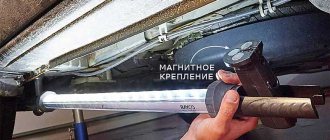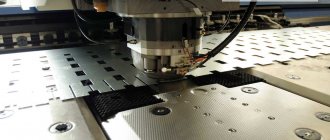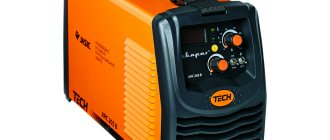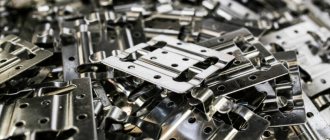We recommend
How to seal a bicycle inner tube at home?
How to paint a bicycle at home?
How to seal a bicycle inner tube
There are several ways to repair a puncture or cut in a bicycle tube, one of which is hot or cold vulcanization of the tires. This method can be confidently called reliable and durable; a wheel secured with raw rubber will serve like new and will not go flat at the most unexpected moment. You can easily carry out such repairs yourself, both at home and outdoors on a hike, if you have some necessary parts. The hot vulcanization method differs from the cold method only in how the patch applied to the wheel is fixed - with or without heating.
What is vulcanization? This is a chemical process due to which, with the expenditure of heat, the strength properties of rubber improve, it becomes elastic and hard. You can apply a patch to a puncture using a piece of an old tube or a ready-made patch from a repair kit, and to secure them you need raw rubber with your own hands, which is sold in rolls with a protective film. This is a very plastic material, it sticks to any surface, easily sticks together into a lump, etc. raw rubber instructions for use are indicated on the packaging.
- There are two types of vulcanization - cold and hot, let's look at both of them in more detail.
Concept of vulcanization
Vulcanization is a chemical process during which raw rubber, improving the properties of the material in strength and elasticity, becomes rubber. In fact, rubber can be used as a special glue to seal a puncture in an inner tube or tire. Rubber vulcanization processes are as follows:
Hot vulcanization method
- electric;
- sulfuric;
- hot;
- cold.
Material properties
The performance properties of the resulting vulcanized rubber and products made from it largely depend on the type of reagent used. Such characteristics include resistance to exposure to aggressive environments, rate of deformation during compression or increased temperature, and resistance to thermal-oxidative reactions.
The resulting bonds irreversibly limit the mobility of molecules under mechanical action, while simultaneously maintaining the high elasticity of the material with the ability to undergo plastic deformation. The structure and number of these bonds is determined by the rubber vulcanization method and the chemical agents used for it.
The process does not proceed monotonously, and individual indicators of the vulcanized mixture in their changes reach their minimum and maximum at different times. The most suitable ratio of the physical and mechanical characteristics of the resulting elastomer is called the optimum.
The vulcanizing composition, in addition to rubber and chemical agents, includes a number of additional substances that contribute to the production of rubber with specified performance properties. According to their purpose, they are divided into accelerators (activators), fillers, softeners (plasticizers) and antioxidants (antioxidants). Accelerators (most often zinc oxide) facilitate the chemical interaction of all ingredients of the rubber mixture, help reduce the consumption of raw materials and time for its processing, and improve the properties of vulcanizers.
Fillers such as chalk, kaolin, carbon black increase the mechanical strength, wear resistance, abrasion resistance and other physical characteristics of the elastomer. By replenishing the volume of feedstock, they thereby reduce rubber consumption and reduce the cost of the resulting product. Softeners are added to improve the processability of rubber compounds, reduce their viscosity and increase the volume of fillers.
Plasticizers can also increase the dynamic endurance of elastomers and abrasion resistance. Antioxidants that stabilize the process are introduced into the mixture to prevent “aging” of the rubber. Various combinations of these substances are used in the development of special raw rubber formulations to predict and adjust the vulcanization process.
Types of rubber
Rubber is one of the few materials that has different hardness. Depending on the percentage of sulfur, it is:
- soft – contains up to 3% sulfur;
- semi-solid – from 4 to 30% sulfur;
- hard – more than 30%.
Soft rubber Hard rubber
Semi-hard rubber
Rubber is a natural material, and as a rule, products made from natural ingredients are of the highest quality and most durable. Therefore, components for bicycle and car wheels are made of soft rubber, which is based on rubber.
Internal surface treatment
The initial task when starting work on the inner surface of the tire is to determine the optimal size of the patch. For this purpose, it is recommended to use a table of maximum dimensions that takes into account the width and length of the cut.
Having marked the patch itself and the area to be repaired with axial lines, you should align them and select the required stripping zone, which is 5-10 mm larger than the dimensions of the patch. Before cleaning, its surface is degreased using a buffer cleaner applied with a brush or spray. Without waiting for the cleaner to dry, carefully remove the layer of dirt with a scraper.
Cleaning of the repaired area is carried out with the same low-speed pneumatic drill, but using a hemispherical carbide cutter. It is most convenient to perform this operation on a side expander. In this case, a small fragment of a chamber from a bicycle wheel, put on a pneumatic tool, performs two important functions at once: it diverts the air stream beyond the working area and prevents contamination of the cleaned surface with drops of oily condensate.
Please note that the use of high-speed tools and abrasive stones leads to a deterioration in the strength characteristics of the upper layers of rubber due to their melting. The use of narrow carbide cutters does not allow obtaining a sufficiently smooth surface after cleaning - as a result, the layer of applied glue dries unevenly, and air zones remain under the plane of contact of the patch.
The cleaning is completed by additional roughening of the surface using a cord brush - a simple, but extremely effective and useful operation. The finished surface does not need to be degreased; you just need to remove the particles of crumb rubber and dust remaining in the inner cavity of the tire with a vacuum cleaner.
Electrical vulcanization of rubber
In general, vulcanization can be cold or hot. The electrical vulcanization process is a hot method. An electric stove with a ceramic heater is used as a heater at home; a hair dryer or a regular iron is also suitable. The optimal temperature for this method is 145С. To determine the temperature, you can also use available means, for example, if a sheet of paper begins to char, it means that the temperature has reached the required values.
Electrical vulcanization of rubber
There are also special clamps with a heating element. Such devices can operate from a 220V household network, from a car battery, through a cigarette lighter socket, or from their own battery. It all depends on the performance of each device. These clamps are easy to use; you need to attach a rubber patch to the camera, clamp it and plug it into the network.
Differences in patches by type of tire
Modern manufacturers offer radial and bias-ply tires. Repairing punctures on radial and bias-ply tires differs significantly, so it is important to use the correct consumables.
Radial patches
The design properties of this type of consumables fully correspond to radial tires. Such products are designed to experience loads from the edge to the middle of the side track. They provide reliable, long-lasting wheel service regardless of the location of the damage. There are different types of patches:
- standard - can be used for restoration in any part of the wheel, are made mainly of polyester threads laid in several layers;
- multi-layer - allow you to repair tubed and tubeless radial tires of various vehicles.
The production of radial patches is carried out on the basis of viscose or nylon cord, known for its strength and low elongation. Having a large length and insignificant thickness, this type of product during operation eliminates the risk of increasing the level of rigidity in the side part of the wheel wall and at breakout sites. At the same time, the quality and durability of the work performed significantly increases.
The edges of the product, treated with an additional layer of rubber, are resistant to cracking. The use of a square shape allows for effective repair work on treadmills.
They can be vulcanized using cold or hot methods. In the first case, it is recommended to use a seaming roller, in the second - a one-stage heat press technology. During hot vulcanization, the thermal plaster is heated to 135°C using a pressure of at least 3 atm - this gives the adhesive layer special strength.
Diagonal patches
Helps eliminate defects in bias-ply tires. This type of consumable material can have a one-piece construction and consist of specially selected layers of cord - they give the product strength and elasticity for operation under variable load conditions.
They are installed on the inside of the tire, ensuring high levels of tightness. Suitable for working with damage in any part of the wheel. Can be used to repair tires of trucks, quarry equipment, and passenger cars. Can be used to repair both nylon and viscose frames. The design of adhesives for road construction equipment ensures that the tension of the threads exactly matches the angle of intersection of the threads of the wheel frame.
This type of product is made from synthetic or natural rubber. From here the following properties of diagonal patches become obvious:
- high strength;
- maximum resistance to damage;
- variety of forms.
Sulfur vulcanization of rubber
After rubber vulcanization
This operation consists of a chemical reaction in which sulfur atoms are added to the rubber. When added up to 5%, it produces raw materials for the manufacture of tubes and tires. In the case of gluing two elements, sulfur helps connect the rubber molecules, forming a so-called bridge. This procedure refers to the hot method, but it is unlikely that it will be possible to do it on a hike or on the highway.
How does the vulcanization process work?
The vulcanization procedure takes place strictly according to one technology, where all stages are strictly followed. If you violate at least one phase, then in the end you will not be able to achieve the desired result. Stages of the vulcanization procedure:
- Initially, the elements are immersed in designated containers.
- Then the hydraulic press plates are heated, and the containers are placed exactly between them.
- The composition is heated strictly to a specific temperature in order to obtain the required substance.
- The substance is then placed in a boiler, where it is heated again.
It should be separately noted that the elastomer helps not only during the vulcanization process, but during the manufacture of children's goods or shoes.
You may be interested in Bicycle tires with studs: how to install them yourself
Hot vulcanization
Rubber, as a raw material, has the property of being welded into a single composition at a temperature of 150 °C. As a result of this process, the rubber becomes rubber and cannot return to its original position. Thanks to its capabilities, rubber can fix any punctures and cuts in the tube and tire.
It is necessary to vulcanize rubber using a hot method, only using a press. The depth and area of the cut will tell you how long to weld. Typically, it takes 4 minutes of cooking to repair a 1mm cut. Accordingly, if the cut is 4mm, then it needs to be vulcanized for 16 minutes. In this case, the equipment must be warmed up and configured.
By performing hot vulcanization at temperatures above 150°C, you can ruin the rubber and achieve nothing, since the material will deteriorate and lose its characteristics.
Using clamps or a press allows you to properly patch the damage. After finishing the work, you should make sure that there are no voids or air bubbles in the seam. If there are any, you need to clean the puncture site from fresh rubber and repeat the whole process again.
In order to hot seal a camera at home, you must do the following. From raw rubber, you need to cut a piece slightly smaller than the patch itself. The tube or tire is cleaned slightly wider at the damaged area, to a rough state, and then degreased with gasoline. When preparing the patch, you need to cut the chamfer at an angle of 45°, also sand and degrease. Then we cover the puncture site with a patch, clamp it in a vice and heat it to the desired temperature.
If you dissolve raw rubber in gasoline, you can get a special glue for rubber, the use of which improves the quality of the seam. Particular attention should be paid to temperature conditions. Vulcanization is carried out at a temperature of 140 - 150 ° C; if there is a smell of burnt rubber, it means the patch has overheated, and if it has not merged with the overall product, then it may not have reached the required temperature. To prevent rubber from sticking to metal, you need to place paper between them.
"Hot" advantage of the one-step method
When comparing two repair technologies, you should start with the main difference. With a one-step repair method, the patch and glue are heated to high temperatures under pressure, but with a two-step repair method, they are not. A reasonable question arises: what advantages does the one-step method get over “cold” vulcanization, and does it get it at all? Let's answer in order:
- When the repair site is heated above 60°C, the air remaining under the patch expands. Next, the heated air increases in volume and is squeezed out from under the patch. As the air is displaced, the heated chemical layer of the patch evenly fills all the voids. As a result, the connection of the repair surface with the chemical layer occurs over a larger area. In practice, the connection area becomes 4-7% larger than the area of the patch. Of course, this improves the quality of repairs.
- After heated air under pressure has been squeezed out from under the patch, a vacuum is formed in the remaining voids as it cools and the patch sticks to the repair surface. The suction effect increases the strength of the connection between the patch and the splint.
- Increasing the contact area has another important advantage. The specific peel load acting on the chemical layer (which is always the weakest point in the design of the patch) decreases in inverse proportion to the increase in the adhesion area (i.e. by 47%). The larger the contact area, the lower the peel load on the chemical layer.
- The quality of the repair is also significantly affected by the compression density of the chemical layer itself, which, when heated under pressure, will always be 20-30% stronger than a chemical layer vulcanized “cold” without pressure.
- In addition, heating sharply increases the activity of the glue and improves the binding properties of the chemical layer of the plaster, which allows you to confidently cover all possible mistakes the master made during the repair process.
- Finally, heating the patch under pressure destroys the sweat film from accidentally touching it with your hands.
Thus, heating under pressure provides the one-stage repair technology with a number of undeniable technological advantages.
Now let's look at the disadvantages of “cold” vulcanization.
- The patch does not heat up and therefore the area of its contact with the cleaned surface is smaller.
- There is always air under the patch.
Its quantity depends on the accuracy of stripping and the hardness of the applied patch. According to TECH, even under soft patches, residual air occupies up to 7% of the area. Accordingly, even more voids will remain under the rigid Tip-Top adhesives. When the tire heats up during driving, the air remaining under the patch will expand and tend to escape. Therefore, patches installed using the “cold” method must be coated with tubeless layer sealant. For one-stage repairs, this measure is not required.
- The glue does not heat up and its activity does not increase.
The ratio of pros and cons is not in favor of the imported repair method. But this does not mean that “cold” vulcanization is an unreliable technology. Not at all. It's just designed for completely different road conditions. In prosperous Europe there is no need for ultra-reliable repairs, which cannot be said about us. Rossvik's task is to convey this simple idea to those who still prefer “cold” vulcanization.
Cold vulcanization
Nowadays, using this method is not difficult, since you can purchase a repair kit in every auto or bicycle parts store. The contents of this set may vary, but each one contains patches and special glue.
Cold vulcanization of rubber
The repair procedure in this case is similar to the hot method. You also need to treat the damaged surface with an abrasive, remove rubber dust and degrease. After drying, apply glue to the camera and glue the patch. In this case, it is not the duration of the pressure that plays a role, but its strength. Therefore, it will not be enough to simply press down with a stone; more force is required.
Do-it-yourself cold vulcanization of rubber is a fairly simple process that can be performed wherever you are if you have a special kit. However, raw rubber is not made with your own hands at home. For such work you need special equipment.
Wheel balancing after repair of hernias and cuts
Tire vulcanization, like any other repair action, affects the structure of the tire, which means it shifts the center of gravity of the wheel. As a result of such an imbalance, unbalanced centrifugal forces arise with different vectors of application.
Wheel balancing is carried out to eliminate imbalance
This results in increased wheel vibration and load on the hub, which leads to a number of negative consequences:
- Rapid wear of the suspension up to the loss of a wheel while driving.
- Deterioration of adhesion to the road surface, increase in braking distance.
- Poor handling and reduced travel safety.
- Accelerated uneven tread wear.
- Constant vibrations on the steering wheel and discomfort for the driver.
To avoid significant costs for suspension repairs and not face even greater problems on the road, we recommend balancing the wheel immediately after vulcanizing the tires!
Wheel balancing is performed on a special machine with the installation of lead weights. Modern electronic stands allow you to achieve more accurate results.
Source
Making a vulcanization device
Each vulcanizer has two main elements - a heating part and a clamping device. The basis of such rubber processing equipment can be used:
- iron;
- “bazaar” electric stove;
- piston from the engine.
In a device with an iron, the heating part is the surface that is used for ironing in everyday life. If we plan to use an electric stove, then the heating coil should be covered with a metal sheet, and when working, you need to place paper between the rubber and the metal. Such a device must be equipped with a thermostat to avoid overheating of the material.
The pressing part of the vulcanizer is easiest to make from a clamp. The simplest device to manufacture would be a device consisting of an iron and a clamp. Since they are both metal, joining them using arc welding is not difficult. The iron also has a thermostat.
A piston vulcanizer also uses a metal plate. A rubber bladder is placed on it. The piston, with its smooth part, which is in contact with the explosive mixture in the engine, presses down the patch using a homemade clamp. Paper is also placed between the piston and the patch. After that, gasoline is poured into the piston and ignited.
Such a device made from a piston is especially useful on the road, when there is no way to connect to the electrical network. However, such a device does not have a thermostat, and the temperature will have to be controlled manually.
DIY tire vulcanizer
You can even do it with your own hands, with ingenuity and skillful hands. You can make a unit:
- from a household iron;
- from an electric stove;
- from a piston from a car engine.
If you use an iron, its sole will serve as a heating element. A device with a thermostat would be ideal. A pipe can act as a press. Such a vulcanizing device will require a minimum investment of money and material.
A piston vulcanizer will become an indispensable assistant if a tire puncture occurs on the road, and there are no special materials for vulcanization and a socket at hand. This unit works according to the following scheme:
- The camera is placed on a flat metal surface.
- The damaged area is pressed against the bottom of the piston and firmly fixed.
- Paper is placed between the rubber and metal.
- Sand is scattered next to the piston (so that the paper does not burn).
- Gasoline is poured into the piston and ignited.
It is quite possible to carry out homemade vulcanization, but it is better if this work is done by professionals at a service station. This procedure does not take much time and is inexpensive.
Source
Pros and cons of vulcanization
The main advantage of the tire repair process is that it is cheaper to repair than to buy a new one. However, each situation is individual, so it is important to determine whether repairs will save the situation.
The cold method is quite easy to use, it will not take much time, and the costs will be minimal. The main disadvantage of this method is the unreliability of gluing. This procedure is temporary, and you should contact a service station as soon as possible.
Hot vulcanization reliably welds rubber, allows such work to be carried out at any temperature and has a low cost.
So, you can repair a tube or tire in different ways, but it is better to entrust this work to specialists, because it is for your own safety.
What is “raw” rubber and where is it used?
It is worth noting that mixtures with this composition are of low quality. However, this indicator directly depends on the amount of styrene in the composition: the more of this substance, the stronger the material.
General purpose mixtures come in high and medium density. The first ones are used to work with shock-absorbing parts. Rubber of the second category is used for sealing rubber products.
It is worth mentioning separately about mixtures that are intended for repairs or work with retreaded tires:
- for pouring into damage funnels. They look like a long cord with a diameter of 8 to 10 mm, used in extruders;
- lateral. This rubber is in demand for repairing the shoulder area of tires;
- primers – for the tread, tire frame;
- vulcanized compositions in the form of processed tapes. Used for repairing truck and large tires;
- unvulcanized compounds that have not been processed. Such raw rubber is taken when welding treads on tires in presses.
There are really many varieties of raw materials. And in each case, it finds wide application in industry and in tire repair. With the advent of this material, the usual processes of repairing damage to tires or welding on the tread have been greatly simplified. But earlier, when mixtures did not exist, the master assembler independently prepared compositions suitable for the job. Of course, this took a lot of time and did not guarantee reliability, so the invention of raw rubber greatly simplified repair tasks.
Added: 12/4/2017 23:59:30











